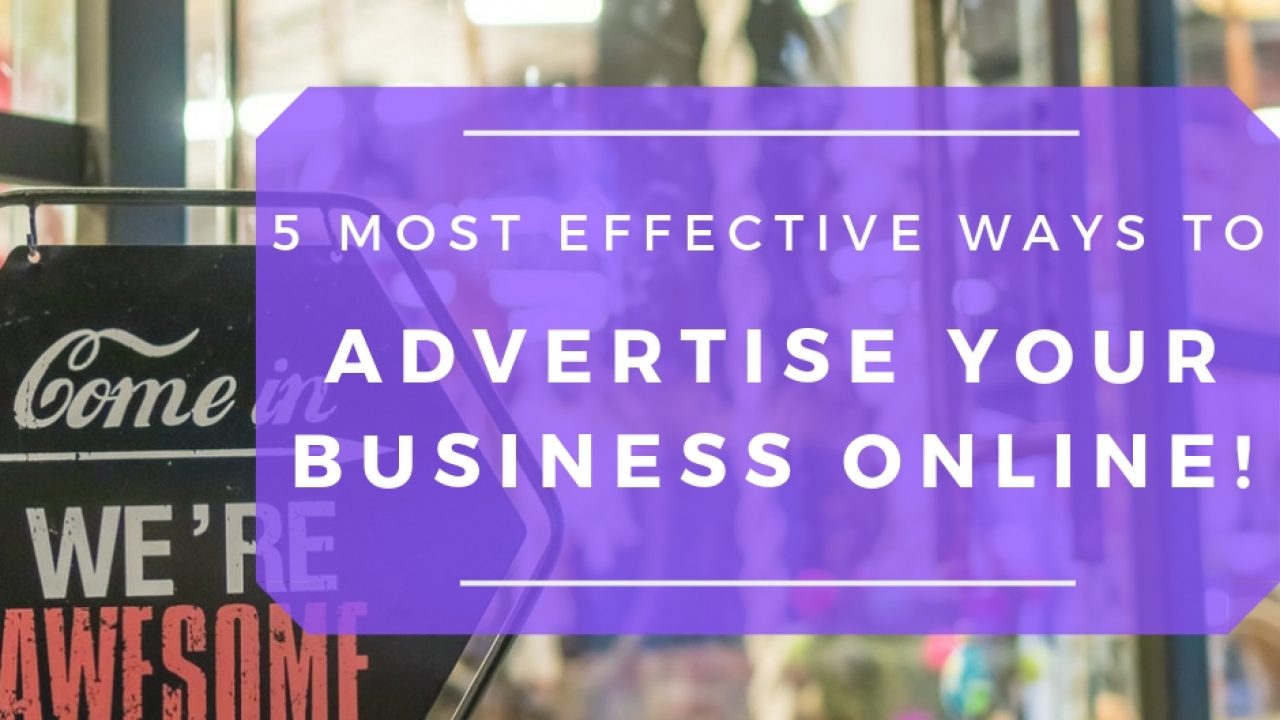As the web has matured, it has expanded the different ways in which businesses can promote their products/services. However, not every approach is best, and some work better than others depending on the product or service being marketed. Here are 5 ways to advertise online that are worth exploring. (Source: Quantise)
1. Purchase Ads on Google, Facebook, Linked In, Etc.
The most direct form of promotion on the web is with paid advertising.
Target Demographics, Topics, and More
Depending on what platform is chosen, it’s often possible to drill down to specific demographical groups to target the most likely customers who will be receptive to the product or service that you’re promoting.
This way, by targeting relevant topics or search terms, advertising dollars aren’t wasted on people who have almost zero interest in what you’re offering.
Adjust as the Campaign While It’s Underway
Advertising campaigns can be actively monitored and adjusted while the money is being spent on advertising.
For text-based adverts, the wording can be changed to test which phrasing is getting the most click-throughs and intended actions once on the website (product purchase, sample ordered, newsletter opt-in). Graphical ads often have adjustable text elements that can be tweaked. And for purely graphical banners, be prepared to make on-the-fly changes using a graphics editor like Photoshop to enable further iterations for testing.
By being willing to test the effectiveness of a campaign, it’s possible to achieve a higher ROI with the same ad spend. Also, improved results are achieved before everyone in the target demographic has already seen the advertisement. This avoids it being a wasted opportunity that won’t come a second time.
2. Promote Socially Using Influencers
The social influencer culture is here, and it’s probably here to stay. For every industry and niche, there’s at least one influencer who has garnered an audience online of followers interested in their area of focus. It almost doesn’t seem to matter what the topic is; there are often a few influencers that share interesting news stories, promote upcoming products, and otherwise sustain interest in the topic.
For brands looking for alternative ways to advertise beyond print ads or online display advertising, working with a social influencer is an effective means to get eyeballs on new products or services. It helps when the influencer is also a user of the service or a consumer of the product, but it’s not essential.
Even if they can promote it as an “interesting product I’ve recently come across,” that works fine too. They will need to confirm that it’s a paid product placement, but when it’s a good fit with their content and audience mix, then that doesn’t seem to matter.
3. Start a Business Blog
While a blog may be seen as dull or uninteresting, that’s not the case for the readers. People who wish to hear more from the people at the company can find interesting thought pieces on their blog. Through that, they can appreciate that the staff talk the talk and walk the walk. Their knowledge should shine through. This can be very convincing for potential customers on the fence who don’t need to see another advert but require something more substantive to be convinced.
The blog can also powerfully introduce new products or features in a controlled manner. Unfussed by the need for one-minute soundbites, in-house marketers can prepare material that provides information about the product that likely customers will find beneficial to them. That might mean a video walkthrough product demonstration, a breakdown of which business customers will best make use of the new service, or something else entirely.
4. Monitor Reviews and Respond Carefully
Customers are increasingly leaving reviews sharing their opinions with the world. The reviews may be on Glassdoor, Google, Yelp, Facebook, or elsewhere. Brand and product/service mentions must be monitored to catch anything negative (or positive) that’s being shared. The sooner the company can respond, the better. A lack of response, or a slow one, may indicate to social users that the brand doesn’t care about its customers.
Companies must treat review sites and social commentary as a form of customer care combined with brand protection. Criticisms must be taken seriously and followed up. Praise should be equally responded to in kind. It’s a chance for the voice of the company to shine through.
5. SEO
Ranking high in Google is thought by many as a form of “free advertising.” And they’re not wrong. When you consistently appear high up in the search results, there’s a degree of brand recognition that goes with that. It confirms that Google thinks highly of the company, and by extension, so should searchers too. This can be another form of positive advertisement.
Businesses that take appropriate steps to improve their chances of ranking well in the search engines can drive free organic traffic to relevant pages on their website. This can lead to sales conversions without the expense of paying social influencers or paid advertisements.
Companies need to look outside the box for different approaches to promotion. While paid ads certainly are still effective and have their place, these can now be combined with other promotional efforts that get the brand in front of potential buyers more frequently.
